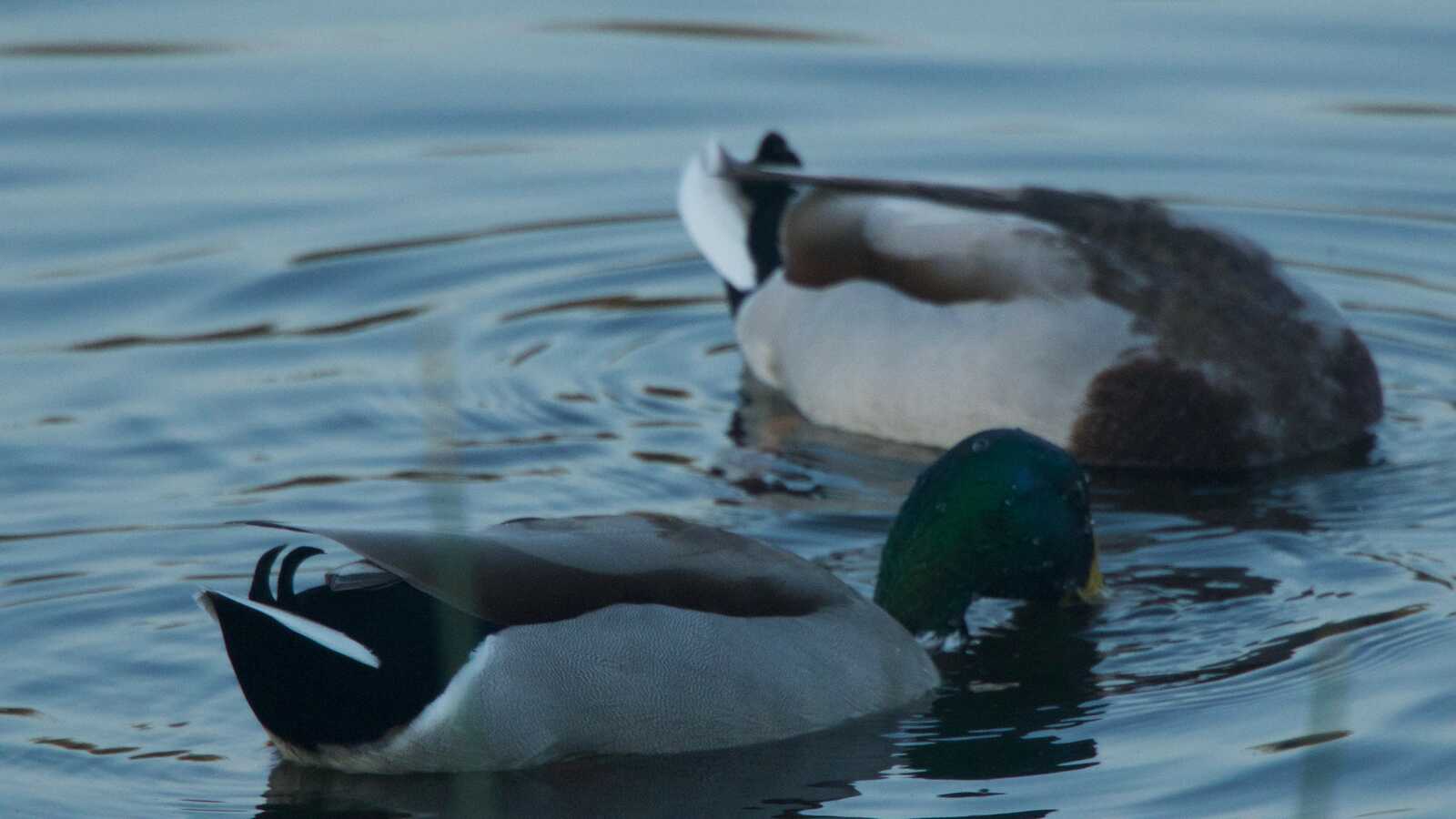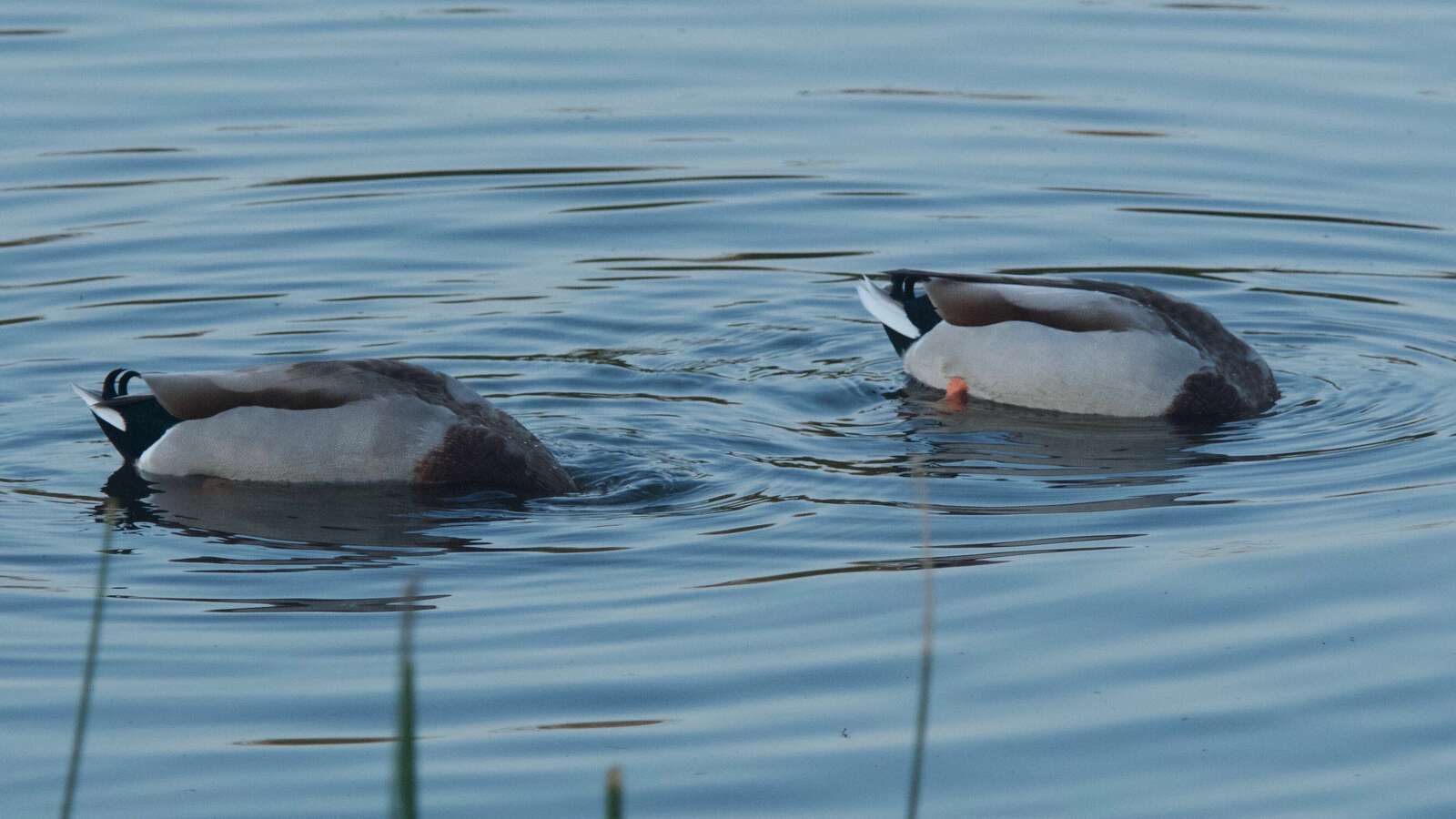Answer:
First of all, we can see that these birds on on the water. They don’t
have the usual body shape of loons, grebes, coots, phalaropes, or
gulls, which leave us to believe they are a type of waterfowl.
It is difficult to note if they are either ducks of geese because we
can’t see their bills and necks but, based on the photo, they don’t
look very large, their bodies aren’t as rounded, and the ends of their
wings don’t extend very far, which suggests that they are ducks
instead of geese. Also, their body coloration is not like that of any
of our local geese or introduced Mute Swans.
Now that we know they are ducks, we can also observe and consider
their behavior—dipping their heads in the water shows us that they
are dabbling ducks. If they were diving ducks they would be swimming
completely under the water.
The coloration of the ducks is bright and they have a lot of contrast,
revealing they are males. Female ducks are mostly mottled brown. That
eliminates the potential of their being Mexican, American Black, or
Mottled Ducks, as the males of those species look almost just like the
females. Even then, Mexican Ducks are rare in Los Angeles County, and
American Black and Mottled Ducks are generally not in Southern
California.
Male Northern Pintails are well known for their long central tail
feathers, which these male ducks obviously lack. They also have pale
gray sides and backs which rules out male Wood Ducks, which have
tannish sides and glossy black backs; American Widgeons, which have
brownish bodies; Cinnamon Teals, which are cinnamon-red all over;
Blue-winged Teals, which have mottled brown sides and backs; and
Northern Shovelers, which have reddish-brown sides and white breasts
and flanks. The ducks lack the green speculums that Green-winged Teals
are named for and their undertails are all black. We are able to see
that they have reddish breasts which are a common characteristic of
male Mallards. That eliminates our last, other possible male dabbling
duck, which is the Gadwall. We also notice that the ducks have other
notable characteristics such as white tails and curled up back
feathers in front of them. If we look closely at the duck on the
right, we can see the base of its orange leg which confirms that the
ducks in the photo are male Mallards.

The photo here shows both male Mallards—the one if the front having
its distinctive green head and yellow bill mostly out of the water.
Congratulations to Thomas, Jake, Sequoia, and Calvin for figuring out
Mallard!

